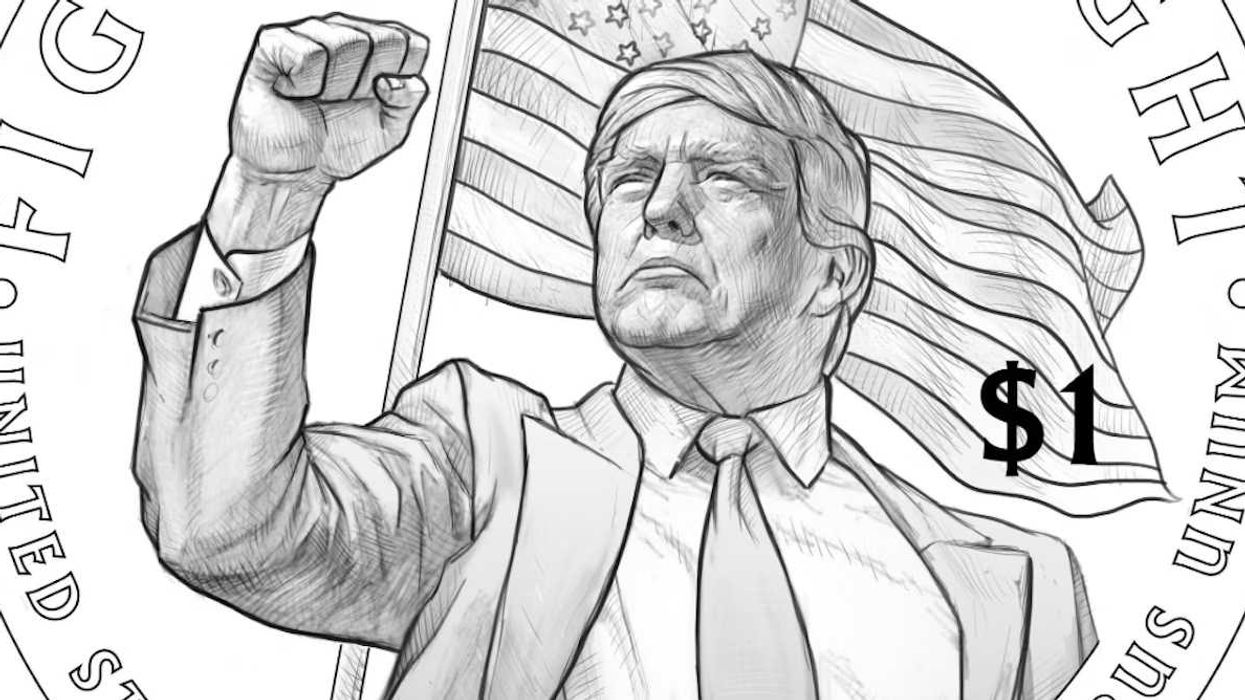The proposed coin depicts Trump in profile on one side (the obverse). On the other side (the reverse) the president raises his fist in defiance accompanied by the words “fight, fight, fight”.
While only a draft proposal, the coin could be minted in 2026 to mark 250 years since the US declaration of independence. But an old law prohibits the “likeness of any living person” from being “placed upon any of the bonds, securities, notes, fractional or postal currency of the United States.”
More than 2,000 years ago, the depiction of living figures on Roman coins caused similar ructions.
It came at a time when the Roman republic was in trouble. The republic would crumble altogether soon after, ushering in the long period of Rome being led by emperor-kings who saw themselves as almost akin to gods.
Perhaps the American republic is at a similar stage.
Sulla’s image on a coin
Rome was said to be founded by the mythical king Romulus, who killed his own twin (Remus). The fledgling state was led by seven kings before it became a republic in about 509 BCE.
By the late second century BCE it was led by Roman general and politician Gaius Marius. Marius and his later rival, Lucius Cornelius Sulla Felix, broke many of the republic’s long-held conventions. They also fought Rome’s first major civil war.
In 88 BCE, while consul, Sulla marched an army on Rome to defend the city from “tyrants” (by which he meant the faction of Marius, who had ousted him). After Sulla won the civil war that followed, he held the dictatorship from 82-79 BCE. Dictatorships were only to be held for six months in times of emergency. Sulla claimed the emergency was ongoing.
As part of this he ordered a list (known as proscriptions) of enemies drawn up. Hundreds or even thousands were killed and had property confiscated.
In the same year a silver coin (called a denarius) was minted in Sulla’s name. One side featured Sulla himself riding in a four-horse chariot.
This was the first time a living person was depicted on a Roman coin. Up to this point only gods and mythological figures had that honour.
It was highly unusual.
Caesar’s challenge to the old republic
Sulla was the first but he wouldn’t be the last leader of the Roman republic to have his image on a coin.
In 44 BCE Julius Caesar went a step further. Only months before his assassination, coins appeared with Caesar’s bust dominating their obverses. Some included the words dict perpetuo meaning “dictator for life”.
By this time, Caesar and many before him, including Marius and Sulla, had broken the mould of the old republic.
Early in 44 BCE, Caesar took the dictatorship for life.
From 46-44 BCE he held the consulship, which was only meant to be held for a one-year term at a time. (Sulla held the dictatorship three years running, which partly set the scene for Caesar’s later emergence and the final breakdown of the republic.)
For many at the time, it seemed Caesar was moving the republic in the direction of monarchy. In January 44 BCE, when a throng hailed him as “rex” (king) Caesar responded, “I am Caesar and no king”. His very name was by now more powerful.
The coins of 44 BCE containing a profile bust of Caesar were an important part of his public program, and part of his challenge to republican convention.
Sulla paved the way 40 years before.
The parallels with Trump are hard to miss
Some emphasise that Caesar did not directly order his image to be placed on coins. Those wanting to curry favour read the room and Caesar did not object.
A similar scenario appears to be playing out with the coin design bearing Trump’s image.
The parallels with Trump are hard to miss. Trump has signed more than 200 executive orders in less than nine months. His predecessor Joe Biden issued 162 in his entire presidency.
Trump’s deployment of federal troops to US cities under emergency decrees provokes cries of tyranny. Sulla’s march on Rome and the proscriptions that followed drew a similar response.
The possibility of a one dollar coin depicting Donald Trump on both sides echoes the coins of Sulla and Caesar.
They might not technically break the law but they would break convention. In the process they also symbolise a notable shift in the US from democracy to autocracy.
When the “no kings!” demonstrations took place in the US earlier this year, they reminded us of a key motivation for the declaration of independence.
A coin celebrating its 250-year anniversary may well symbolize its journey to demise.![]()
Peter Edwell, Associate Professor in Ancient History, Macquarie University
This article is republished from The Conversation under a Creative Commons license. Read the original article.


